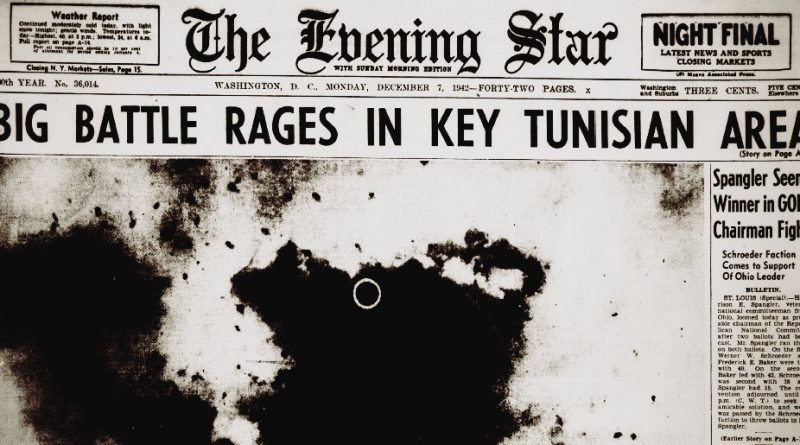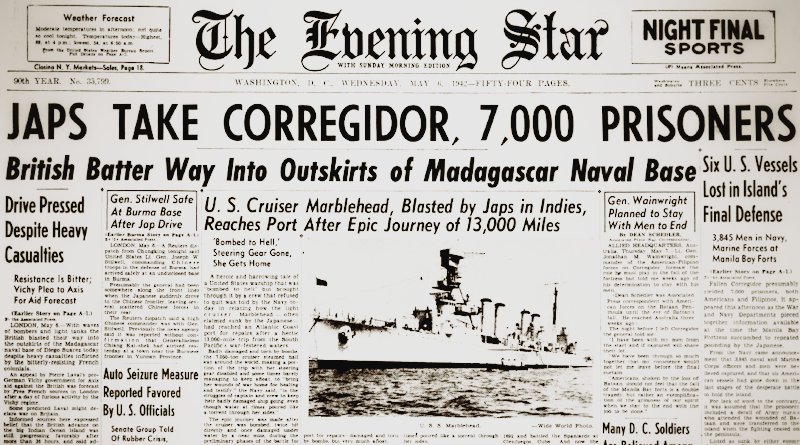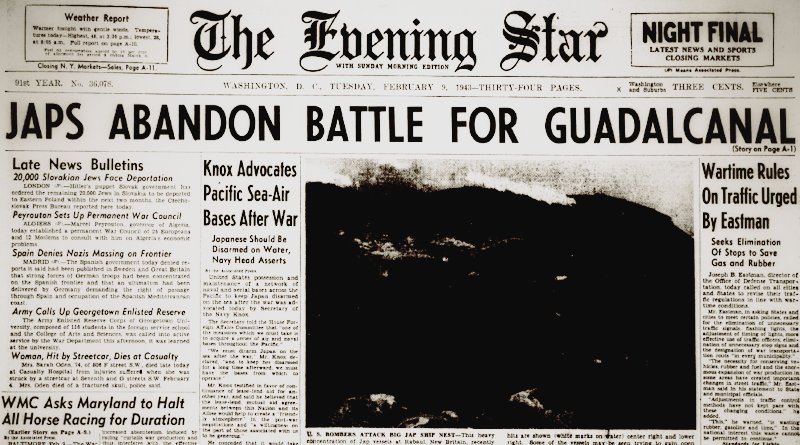World War II Chronicle: September 25, 1941
Click here for TODAY’S NEWSPAPER
The Dodgers have clinched their first National League pennant in 21 years. The last time Brooklyn was in the World Series, they were called the Robins and were led by guys named Burleigh “Ol’ Stubblebeard” Grimes, Zack “Buck” Wheat, and Rube Marquard. You may not have heard of them, but 100 years ago they were on their way to the Hall of Fame. If the Cardinals hadn’t lost Johnny Mize last week to a leg injury and, as Mize said, if they had called Stan Musial up to the majors sooner, the National League picture would look a lot different.
Park Factor
As the regular season winds to a close, I’d like to dive into some baseball history that is easily overlooked 80 years later. While thumbing through my Baseball Encyclopedia (Seventh Edition, 1988) I noticed that Washington’s Griffith Stadium served up only 32 home runs during the 1941 season. The seventh-place Nationals hit 13 with their opponents only belting 19. The only stadium to even come close (you could say “in the ballpark”) to Griffith’s low numbers this year is the 45 hit past the fences at Braves Field (Boston).
Today’s baseball fans may know Griffith was not a home run-friendly park. But why the huge disparity with the rest of the league? By comparison, the total home runs hit in D.C. aren’t even half of what the New York Yankees hit at home (76). It’s not that Washington batters are terrible: the Nationals actually had more base hits, doubles, triples, stolen bases, struck out fewer times, and posted a higher team batting average than the Yankees (much of which can be credited to Washington short stop Cecil Travis). And Washington batters can go deep: they hit 39 home runs on the road.
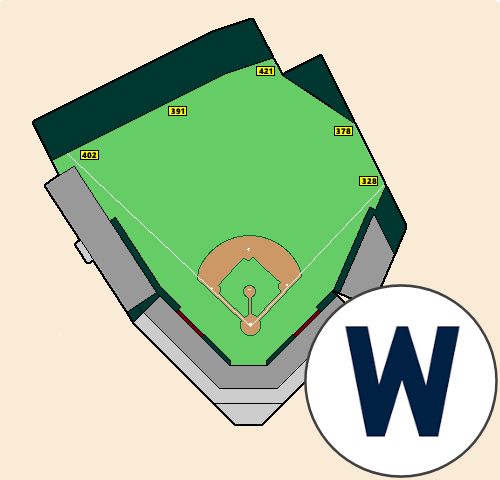
Just seven Nationals went deep at home in 1941: Buddy Lewis (3), Jake Early (3), Mickey Vernon (2), Doc Cramer (2), and Cecil Travis (1) all batted left-handed. Only two righties, Ben Chapman (1) and Jimmy Bloodworth (1) accomplished the feat. As far as the Yankees, who paced the Major League on long balls,: Tommy Heinrich hit three of his 31 dingers at Griffith. Joe DiMaggio belted two, and Joe Gordon, George Selkirk, and Charlie Keller each hit one. Only DiMaggio and Gordon were right-handed batters.
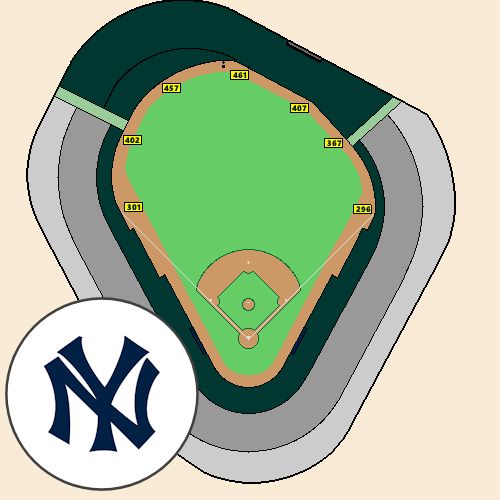
These stadium diagrams should give some insight into how heavily baseball parks influenced the game. And how heavily the neighborhood influenced the layout: Griffith Stadium owes its wonky center field to a group of row houses whose owners refused to sell. Incidentally, Griffith Stadium is named after its owner, Clark “Old Fox” Griffith, who is the only person in baseball history to play, manage, and own a team for 20 years each.

Griffith Stadium was the hardest field to hit a home run in the major leagues. Starting in 1933, Washington fans would see the fewest home runs for 21 straight years. And apart from Braves Field giving up fewer long balls in 1918 and Cincinnati’s Redland Field in 1921 and 1927, Griffith led the league in balls-in-play for either the Nationals or visiting teams each season prior to 1933. Griffith Stadium’s most tyrannical year, however was 1945. Although the Nationals finished second in the American League, they managed just one home run for the whole year.
And it was an inside-the-park job by Joe Kuhel.
Fun fact: “The Big Cat” used to carry dozens of bats with him. From the Society for American Baseball Research:
Mize recalled arriving for spring training in 1940 at the Cardinals’ camp in St. Petersburg, Florida. When he walked into the clubhouse he saw 43 bats lined up along the clubhouse wall — his bats, some left over from the year before, and new ones ordered by the team at his request. The clubhouse man “was most vigorously complaining that they occupied an entire bat trunk. I asked him how he expected me to work without my tools — for which he had no answer,” Mize said. Or, as his teammate Gutteridge said, “When you hit .350, they buy you all the bats you want.”
So Mize started the 1940 season with 43 bats, and when it was over he’d hit a club record 43 home runs, leading the league in that category and in RBIs (137).
“He had bats of different sizes and weights, 34 ounces, 37, 40. The harder the thrower, the lighter the bat,” said Don Gutteridge, who remembered an incident when the left-handed-hitting Mize was about to face a tough, hard-throwing left-handed pitcher (Gutteridge could not accurately recall who) who’d been giving him fits. “We were at home in St. Louis, and John says, ‘Next time I get up there, I’m gonna get one of those light bats and I’ll get around on that high fastball, you watch.’ So, next time up he hits the first pitch out onto Grand Avenue outside of old Sportsman’s Park. He comes back and says to me, ‘See, I told you.'”
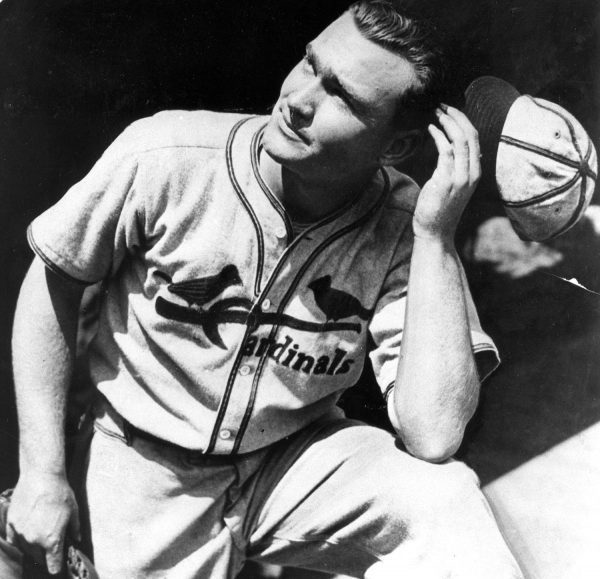
Not-so-fun fact (if you’re a St. Louis fan): this will be Mize’s last season with the Cardinals. The Cardinals send one of the last remaining members of the Gas House Gang to the New York Giants for $50,000 (just under a million dollars in 2021 bills) and three players: Bill Lohrman, who pitches in five games before the Giants buy him back; backup first baseman Johnny McCarthy, who never plays for St. Louis; and Ken O’Dea who sticks around long enough to be the starting catcher in 1945. Mize will get to play for Giants skipper Leo “The Lip” Durocher, who was the Cardinals shortstop when Mize was the first baseman.
Mize is also the only player to hit more than 50 home runs and strike out less than 50 times, accomplishing the feat in 1947. He was also the first-ever player to hit three home runs in four games, and today shares the record for most three-home-run games with Sammy Sosa and Mookie Betts with six. More impressive is that Big John’s numbers would be much higher if he didn’t lose three prime playing years to Naval service during World War II (he played baseball).
As far as stadiums go, he batted .389 at Griffith Stadium — where he hit just one of his 359 home runs — and .250 with 25 home runs at Yankee Stadium. This is not a terrific comparison considering Mize didn’t join the Yankees until he was 36.
George Fielding Eliot column on Bulgaria and Turkey is on page 13… Sports section is on page 42, which features an illustration of Georgetown’s Al Blozis, who we wrote about earlier in the week
Evening star. (Washington, D.C.), 25 September 1941. Chronicling America: Historic American Newspapers. Lib. of Congress.
https://chroniclingamerica.loc.gov/lccn/sn83045462/1941-09-25/ed-1/


